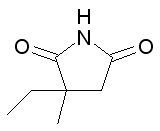Several new antiepileptic drugs (AEDs) are effective in treating selected patients with partial or mixed seizure disorders, but evidence for their efficacy in patients with generalized epilepsy syndromes is lacking, according to a meta-analysis by the American Academy of Neurology (AAN) and the American Epilepsy Society (AES). Evidence-based guidelines for the prescription of new AEDs were published in the April 27, 2004, issue of Neurology.
Before 1990, six major AEDs were available for the treatment of all forms of epilepsy: carbamazepine, phenobarbital, phenytoin, primidone, valproic acid, and ethosuximide. However, many patients "failed" all of these drugs because of inadequate seizure control or side effects of treatment. In the past 10 years, the U.S. Food and Drug Administration has approved seven new AEDs to address the needs of patients for whom the existing AEDs did not provide optimal care: gabapentin (Neurontin), lamotrigine (Lamictal), topiramate (Topamax), tiagabine (Gabitril), oxcarbazepine (Trileptal), levetiracetam (Keppra), and zonisamide (Zonegran).
An AAN/AES committee conducted a structured literature review to determine how the efficacy and tolerability of the new AEDs compare with that of the standard AEDs in patients with newly diagnosed epilepsy, and to evaluate the evidence that the new AEDs are effective in patients with primary or secondary generalized epilepsy.
The group found that gabapentin is effective in the treatment of newly diagnosed partial epilepsy, and that lamotrigine, topiramate, and oxcarbazepine are effective in a mixed population of newly diagnosed partial and generalized tonic-clonic seizures. There currently is insufficient evidence to determine the effectiveness of tiagabine, zonisamide, and levetiracetam in newly diagnosed patients.
Oxcarbazepine, carbamazepine, valproic acid, and phenytoin are similar in efficacy, but oxcarbazepine is superior in dose-related tolerability. In children more than six years of age and adults, topiramate at dosages of 100 and 200 mg per day was equivalent in efficacy and safety to a 600-mg fixed dose of carbamazepine and 1,250 mg of valproic acid per day.
In adults and elderly patients, lamotrigine is equivalent in efficacy to carbamazepine and phenytoin and superior in tolerability to carbamazepine. Topiramate at dosages of 100 mg and 200 mg per day is equivalent in efficacy and safety to a 600-mg fixed dosage of immediate-release carbamazepine given twice daily for partial seizures and to 1,250 mg of fixed-dose valproic acid for idiopathic generalized seizures.
Gabapentin is effective in monotherapy at 900 and 1,800 mg and is equivalent in efficacy to a 600-mg fixed dose of carbamazepine. However, a 900-mg dosage of gabapentin is better tolerated than a 600-mg fixed dosage of short-acting carbamazepine given twice daily.
There are no studies in newly diagnosed patients that assess the efficacy of oxcarbazepine, topiramate, tiagabine, levetiracetam, or zonisamide in children with exclusively idiopathic or symptomatic generalized epilepsy.
There are no studies of any new AED that assess efficacy and tolerability in adults with newly diagnosed epilepsy with exclusively idiopathic or symptomatic generalized epilepsy.
Based on these findings, the group recommends that patients with newly diagnosed epilepsy who require treatment be started on standard AEDs such as carbamazepine, phenytoin, valproic acid, or phenobarbital, or on the new AEDs such as lamotrigine, gabapentin, oxcarbazepine, or topiramate. The choice of an AED will depend on individual patient characteristics. Children with newly diagnosed absence seizures may be treated with lamotrigine.
Because the newer AEDs are much more expensive than the standard agents, further research using an economic decision analysis is needed to determine whether the potential benefits are worth the additional cost.
COPYRIGHT 2004 American Academy of Family Physicians
COPYRIGHT 2004 Gale Group



